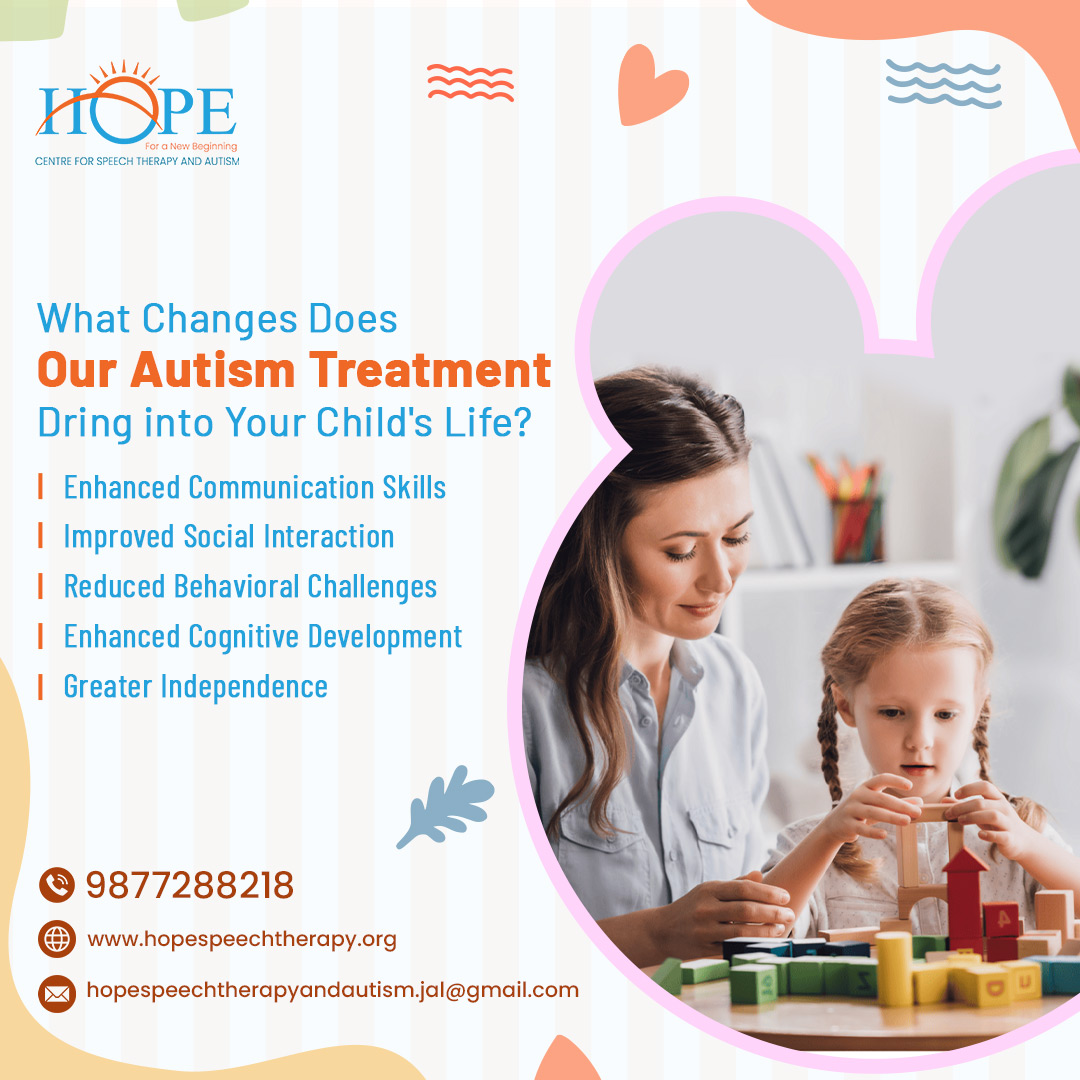Autism spectrum disorder (ASD) is a developmental disorder. It influences how children interact and intercommunicate with others. The disorder is also known as a spectrum disorder because of the broad range (spectrum) of severity. Some children on the spectrum may be capable of talking. Eventually, they may be able to live on their own. Others may not. However, just like everything, Autism Disorder also has its treatment called Autism therapy.
Children with ASD begin to show symptoms at an early age. The symptoms continue during childhood and adulthood. Healthcare providers don’t know why some children develop ASD. It could be a combination of genetic factors and environmental triggers that activate those genes.
In this blog, we will delve into what communication problems Autistic children face, the barriers of ASD, and communication and interaction tips for autistic children.
What is Autism Therapy?
Autism therapy refers to a range of interventions and strategies designed to help individuals with autism spectrum disorder (ASD) manage symptoms, improve skills, and enhance their quality of life. There isn’t a one-size-fits-all approach; therapies are tailored to address specific needs based on an individual’s strengths, challenges, and developmental level.
Some common types of autism therapy include:
- Behavioral Therapies
- Speech and Language Therapy
- Occupational Therapy
- Social skills Therapy
- Educational Interventions
- Sensory Integration Therapy
Do Autistic children face communication problems?
Children with ASD have problems relating to other people. They have difficulty making eye contact. They often withdraw into themselves. They may seem unconcerned about connecting with family members.
Further, children with ASD may be very attentive to a curious topic. They may talk excessively about a topic during conversations. Or they may only speak about that one subject. This can push other people away.
If you are a parent or grandparent of a child with ASD, it can be heart-wrenching if you feel like you are unable to connect with them. However, gaining a better understanding of these disorders and discovering what has worked for others can assist you in improving your relationship with your child.
Breaking through the barriers of ASD
ASD has no cure. But there is hope through treatment. Many children with ASD can comprehend, communicate, and interact. Healthcare providers and mental health experts have learned much about how to break through to these children.
Here are a few things we know about children with ASD:
- They may not be able to comprehend your nonverbal communication. They may not respond to your smile or frown.
- They take things directly. It would support if you were alert enough to say precisely what you mean. If you rush the child by stating, “Step on it,” don’t be shocked if they question what to step on.
- They may only handle one idea or concept at a time. Keep conversations attentive and detailed.
- They may want to only speak about the one thing they are curious about at a given time. And they may like to talk about it again and again.
- They may perceive things differently than you. What seems ordinary to you, like sounds, tastes, touches, smells, and sights, could be physically painful to the child.
Communication and Interaction Tips for ASD
There are no hard and fast rules on how to communicate with a child with ASD, but many family members have had success with these tips:
- Be patient. It often brings a child with ASD extended to process information. It would help if you slowed down your conversation to their speed. Long pauses can be helpful.
- Guide the child on how to express anger without being too warlike. Children with ASD should learn that they don’t have to control their anger and frustration inside.
- Be constant but resilient. Don’t hurt your feelings if the child does not reply as you’d like. Children with ASD may have problems both showing and managing their emotions. They can be harsh in their answers. Don’t take this personally.
- Always stay positive. Children with ASD react best to positive support. Make sure to talk about or award good behavior often. Be warm with compliments for acceptable behavior.
- Forget irritating attention-getting behavior. A child with ASD may misbehave at times to get you to concentrate on them. Skipping this behavior is often the most helpful way to prevent it. Also, talk about and acknowledge the child’s good behavior often.
- Interact through physical activity. Children with ASD tend to have short concentration spans. Running around and playing outside may be a more suitable way of sharing time. It will also let them unwind and feel calmer.
Some more Communication and Interaction Tips for ASD
- Be loving and respectful. Children with ASD often require a hug, just like other children. Sometimes, they need this greatly more than other children. Some children do not like physical contact at all. Even light contact can disturb them. Request the child or caretaker before making any physical contact. Respect their private space. Never push physical affection on an unwilling child.
- Show your love and interest. Children with ASD may have problems displaying their feelings. But they still require you to know that you love them. Go out of your form to communicate your interest, caring, and support.
- Learn from your child. Your child’s unique needs and abilities may show you how to look at the world you’ve never considered. As difficult as it may be on some days, relaxing, laughing, and enjoying your child’s unique gift can give you and your family many rewards.
- Take care of yourself. It’s important to take breaks and recharge. Join parent support groups and ask family and friends for help. School counselors can also provide valuable resources.
Interacting with a child or grandchild with ASD can be challenging, but it’s crucial for their learning.
Final Words
Interacting with a child with Autism requires patience, understanding, and a willingness to adapt. One can foster a supportive relationship by embracing one’s unique communication style, respecting one’s boundaries, and creating a structured and predictable environment. Using clear and simple language, engaging in their interests, and being mindful of sensory sensitivities are crucial elements in building trust and connection.
Ultimately, approaching each interaction with empathy and an open heart lays the foundation for meaningful and rewarding engagement with children on the autism spectrum.



